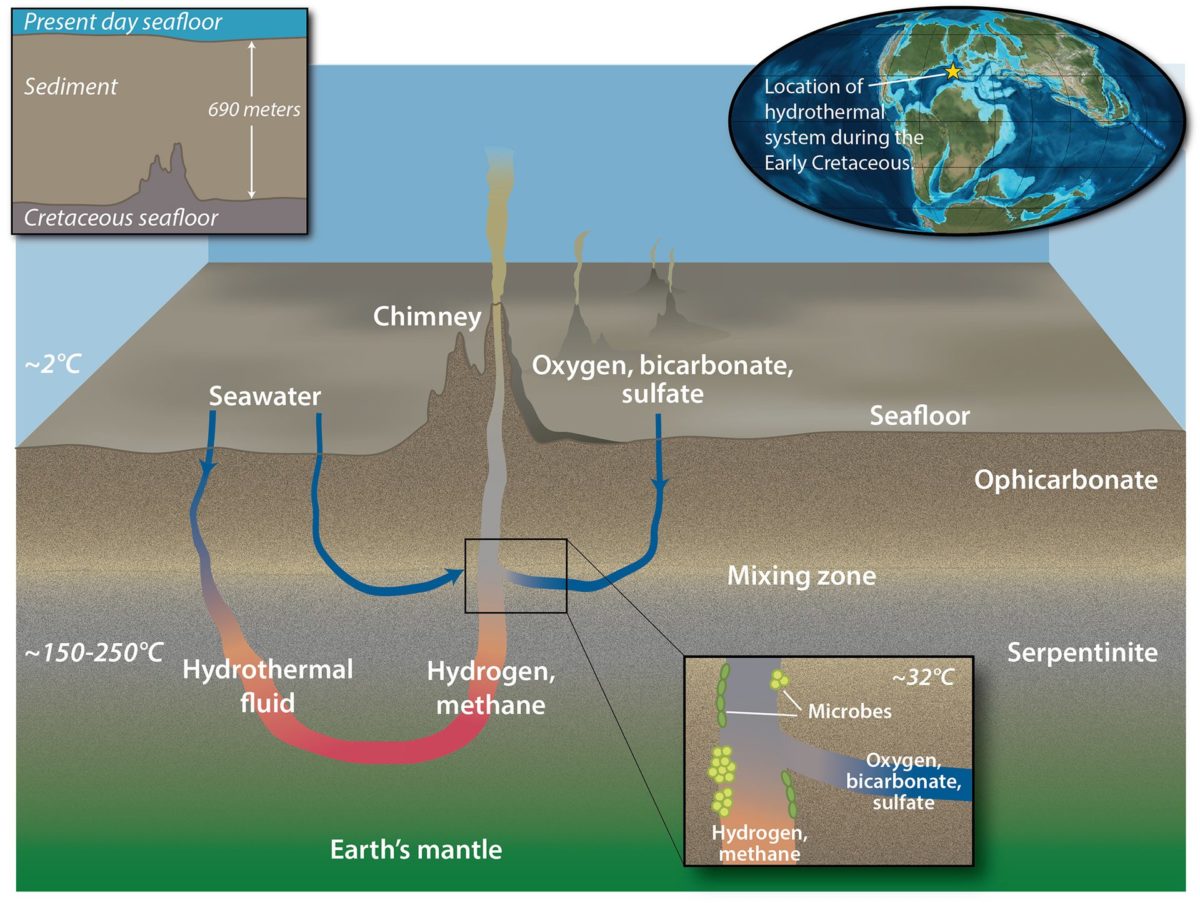Illustration depicting where microbial life is discovered in vents
Scientist found mummified microbial life in rocks from a seafloor hydrothermal system that was active more than 100 million years ago during the Early Cretaceous when the supercontinent Pangaea was breaking apart and the Atlantic ocean was just about to open. Buried under almost 700 meters of sediment, the samples were recovered by the seafloor drilling vessel JOIDES Resolution near the coast of Portugal. Hydrothermal fluids rich in hydrogen and methane mixed with seawater about 65 meters below the seafloor. This process supported bacteria and archaea in what scientists call ‘the deep biosphere’ in rocks from Earth’s mantle. Conditions for microbial life were nearly ideal, the study showed, in this seemingly inhospitable environment. (Illustration by Jack Cook (WHOI) and Ron Blakey (Colorado Plateau Geosystems), © Woods Hole Oceanographic Institution)
Image and Visual Licensing
WHOI copyright digital assets (stills and video) contained on this website can be licensed for non-commercial use upon request and approval. Please contact WHOI Digital Assets at images@whoi.edu or (508) 289-2647.

